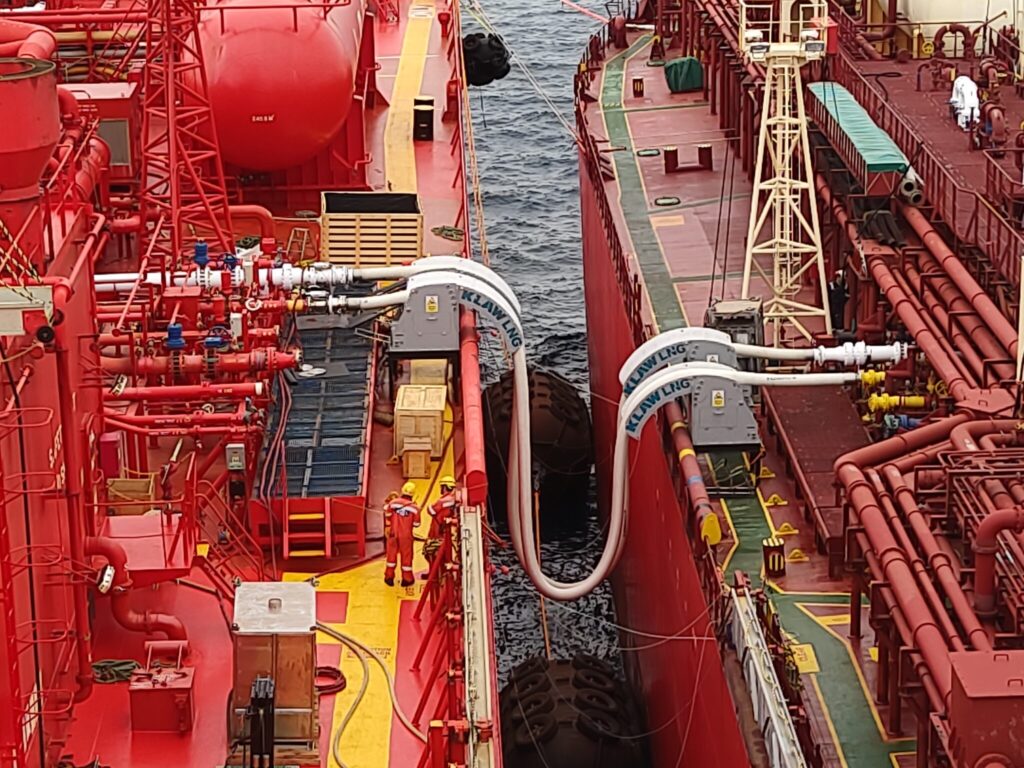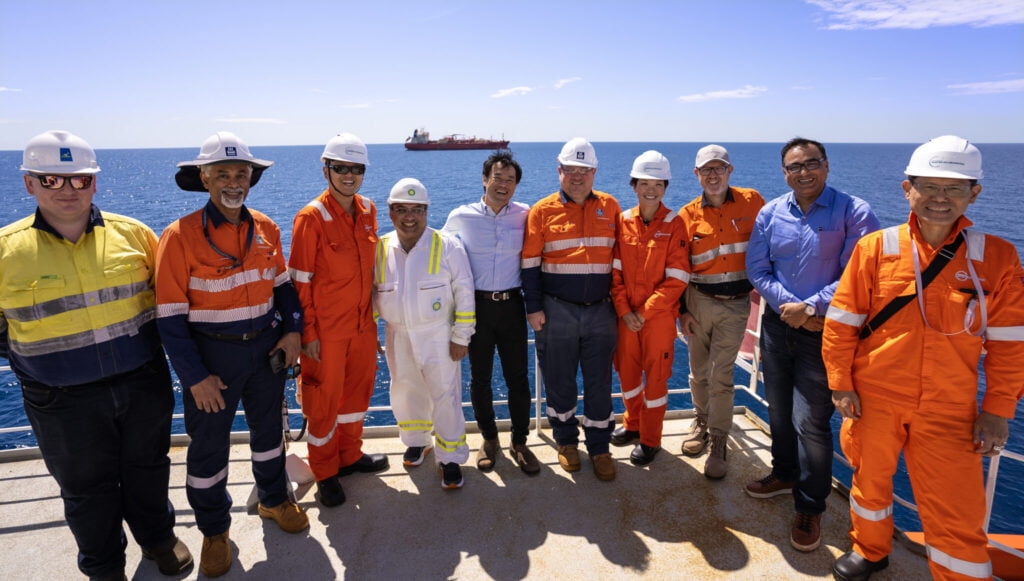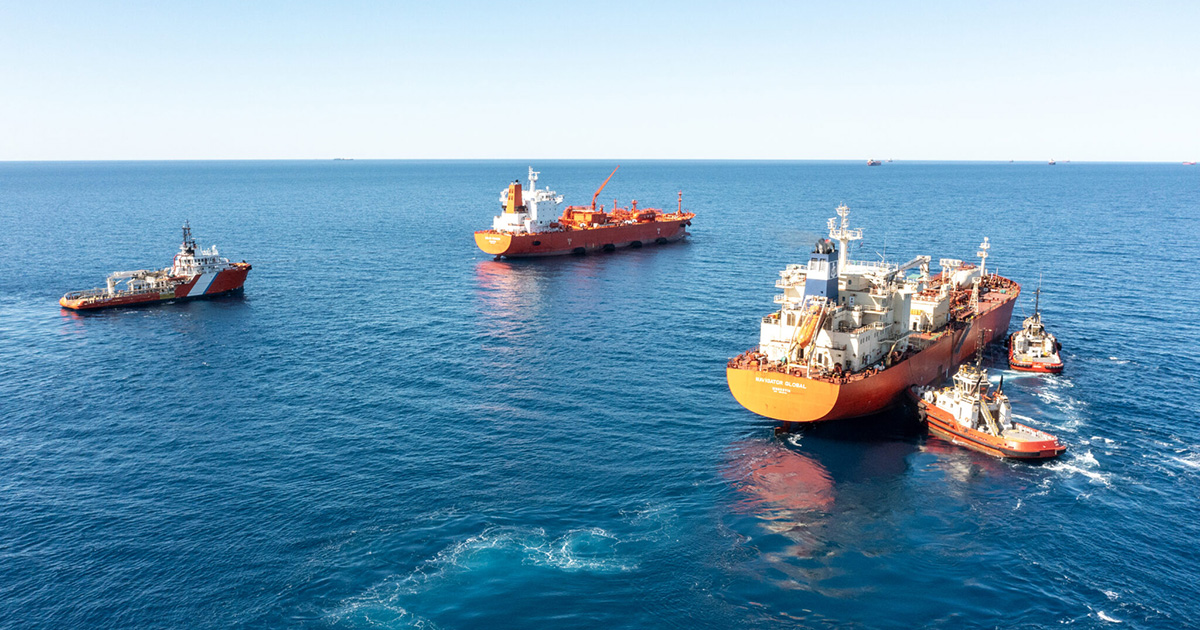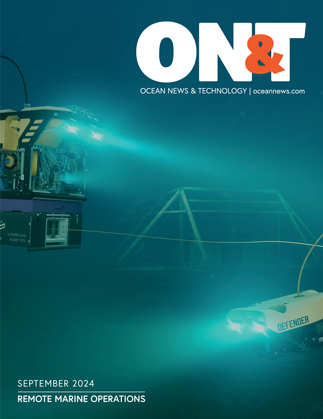“This demonstrates that ammonia transfer can be done with the highest safety standards and efficiency in a working port environment. The transfer is a major milestone to decarbonize shipping using low-emission ammonia as fuel,” says Murali Srinivasan, SVP Commercial Yara Clean Ammonia.
The operation is a result of the collaborative relationship between Yara Clean Ammonia, the Pilbara Ports Authority, and the Global Center for Maritime Decarbonization (GCMD). It was conducted in Port Dampier in Western Australia’s Pilbara region as part of the work to enhance the Pilbara’s potential as a bunkering hub to fuel ships with low-emission ammonia. Low-emission ammonia is produced with renewable energy and electrolysis of water or with carbon capture and storage. Ammonia does not emit CO2 when burned.

The Pilbara Ports Authority and Yara Clean Ammonia have been working together for more than two years investigating the potential demand for ammonia as a fuel, required bunker infrastructure, safety guidelines, and the required regulatory framework. To develop the transfer, this partnership was expanded with GCMD, who successfully attracted additional partners to help ensure a safe and efficient execution of the transfer operation. Port Dampier has ongoing experience with ammonia cargoes with Yara Pilbara’s nearby operations shipping an incident free 11.8 million tonnes to date.
The two ship-to-ship transfers were undertaken between the Green Pioneer, 35,000 cubic meters (cbm) ammonia carrier (owner MOL), and the Navigator Global, a 22,500 cbm ammonia carrier (owner Navigator Gas). The trial involved a dual transfer of 4,000 cm (approximately 2,715 tonnes) of ammonia, first from the Green Pioneer to the Navigator Global and then back to the Green Pioneer.
Murali Srinivasan, SVP Commercial Yara Clean Ammonia, said collaboration on safety is innate to our thinking, and we are very proud to be part of this tripartite project and active collaboration and contributions to the positive outcome of the trials.
“International shipping accounts for 3% of the global GHG-emissions and we see clean ammonia as the low to zero-emission fuel to decarbonize the shipping industry and meet the International Maritime Organization (IMO) targets. For more than a century, we have been producing and shipping ammonia with the highest safety standards and efficient ammonia operations. The successful ship-to-ship transfer of ammonia was a critical learning step in enabling ammonia bunkering operations in a port environment as global shipping moves to effective use of ammonia as a fuel,” says Mr. Srinivasan.

“We thank all partners that were involved and highly appreciate the leadership of GCMD in bringing frontrunners together, as well as the Pilbara Port Authority for their facilitation and guidance. Of course, additional thanks are due specifically to the team of YCA and the Yara Pilbara plant involved in this significant step towards ammonia bunkering,” says Murali Srinivasan.
Yara Pilbara’s Chief Operations Officer Laurent Trost said the successful trials were extremely encouraging as the Pilbara operations move forward with key decarbonization measures.
“We currently have the Project Yuri renewable hydrogen demonstration plant under construction on our existing lease, which will begin injecting green molecules into our ammonia production process next year, and we are also investigating carbon capture and storage, which would swiftly and significantly cut carbon output from our operations,” Mr. Trost says.
“These measures, along with government planning for enablement of green electricity transmission, would allow us to develop low carbon ammonia products in the Pilbara for application in the shipping industry and other clean fuels, as well as the building block for decarbonized ammonium nitrate and fertilizer products,” Mr. Laurent Trost says.

